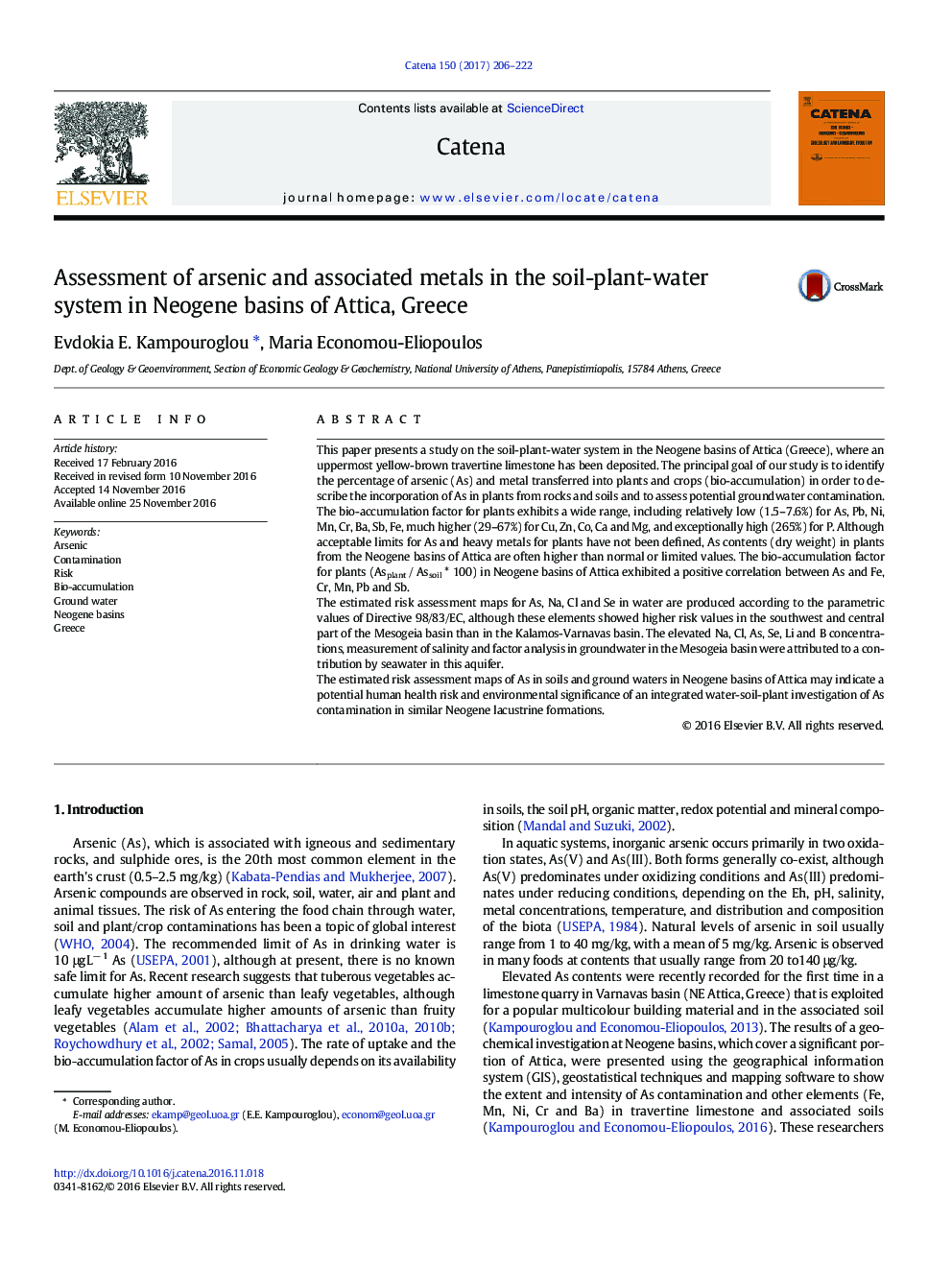| کد مقاله | کد نشریه | سال انتشار | مقاله انگلیسی | نسخه تمام متن |
|---|---|---|---|---|
| 6407661 | 1629204 | 2017 | 17 صفحه PDF | دانلود رایگان |
- The As and heavy metal contents in Neogene basins of Attica are often higher than normal or sufficient values.
- There is a good positive correlation between the bio-accumulation factor for As and that for Fe, Cr, Mn, Pb and Sb.
- Uptake of arsenic increases with higher arsenic concentration in the soil.
- The highest As concentrations in groundwater were recorded in the Mesogeia Basin.
This paper presents a study on the soil-plant-water system in the Neogene basins of Attica (Greece), where an uppermost yellow-brown travertine limestone has been deposited. The principal goal of our study is to identify the percentage of arsenic (As) and metal transferred into plants and crops (bio-accumulation) in order to describe the incorporation of As in plants from rocks and soils and to assess potential groundwater contamination.The bio-accumulation factor for plants exhibits a wide range, including relatively low (1.5-7.6%) for As, Pb, Ni, Mn, Cr, Ba, Sb, Fe, much higher (29-67%) for Cu, Zn, Co, Ca and Mg, and exceptionally high (265%) for P. Although acceptable limits for As and heavy metals for plants have not been defined, As contents (dry weight) in plants from the Neogene basins of Attica are often higher than normal or limited values. The bio-accumulation factor for plants (Asplant / Assoil * 100) in Neogene basins of Attica exhibited a positive correlation between As and Fe, Cr, Mn, Pb and Sb.The estimated risk assessment maps for As, Na, Cl and Se in water are produced according to the parametric values of Directive 98/83/EC, although these elements showed higher risk values in the southwest and central part of the Mesogeia basin than in the Kalamos-Varnavas basin. The elevated Na, Cl, As, Se, Li and B concentrations, measurement of salinity and factor analysis in groundwater in the Mesogeia basin were attributed to a contribution by seawater in this aquifer.The estimated risk assessment maps of As in soils and ground waters in Neogene basins of Attica may indicate a potential human health risk and environmental significance of an integrated water-soil-plant investigation of As contamination in similar Neogene lacustrine formations.
A good positive correlation between As and Fe bio-accumulation factor suggests similarity in their uptake mechanism121
Journal: CATENA - Volume 150, March 2017, Pages 206-222
